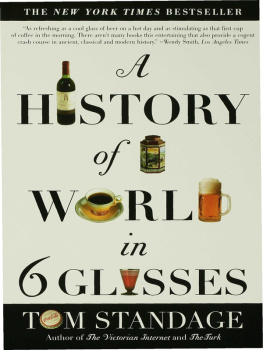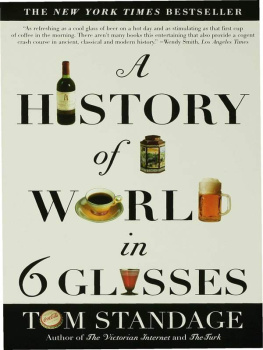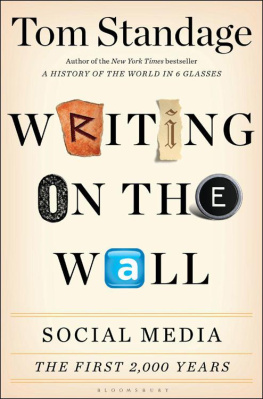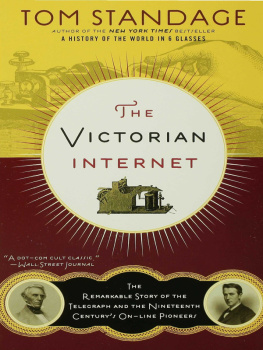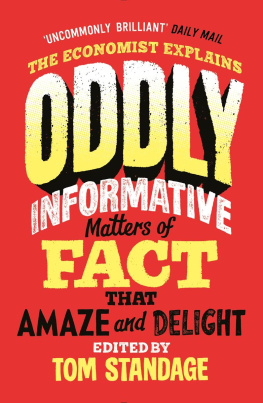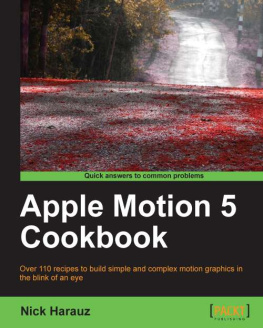Tom Standage - A Brief History of Motion
Here you can read online Tom Standage - A Brief History of Motion full text of the book (entire story) in english for free. Download pdf and epub, get meaning, cover and reviews about this ebook. year: 2021, publisher: Bloomsbury Publishing, genre: History. Description of the work, (preface) as well as reviews are available. Best literature library LitArk.com created for fans of good reading and offers a wide selection of genres:
Romance novel
Science fiction
Adventure
Detective
Science
History
Home and family
Prose
Art
Politics
Computer
Non-fiction
Religion
Business
Children
Humor
Choose a favorite category and find really read worthwhile books. Enjoy immersion in the world of imagination, feel the emotions of the characters or learn something new for yourself, make an fascinating discovery.

- Book:A Brief History of Motion
- Author:
- Publisher:Bloomsbury Publishing
- Genre:
- Year:2021
- Rating:3 / 5
- Favourites:Add to favourites
- Your mark:
- 60
- 1
- 2
- 3
- 4
- 5
A Brief History of Motion: summary, description and annotation
We offer to read an annotation, description, summary or preface (depends on what the author of the book "A Brief History of Motion" wrote himself). If you haven't found the necessary information about the book — write in the comments, we will try to find it.
A Brief History of Motion — read online for free the complete book (whole text) full work
Below is the text of the book, divided by pages. System saving the place of the last page read, allows you to conveniently read the book "A Brief History of Motion" online for free, without having to search again every time where you left off. Put a bookmark, and you can go to the page where you finished reading at any time.
Font size:
Interval:
Bookmark:
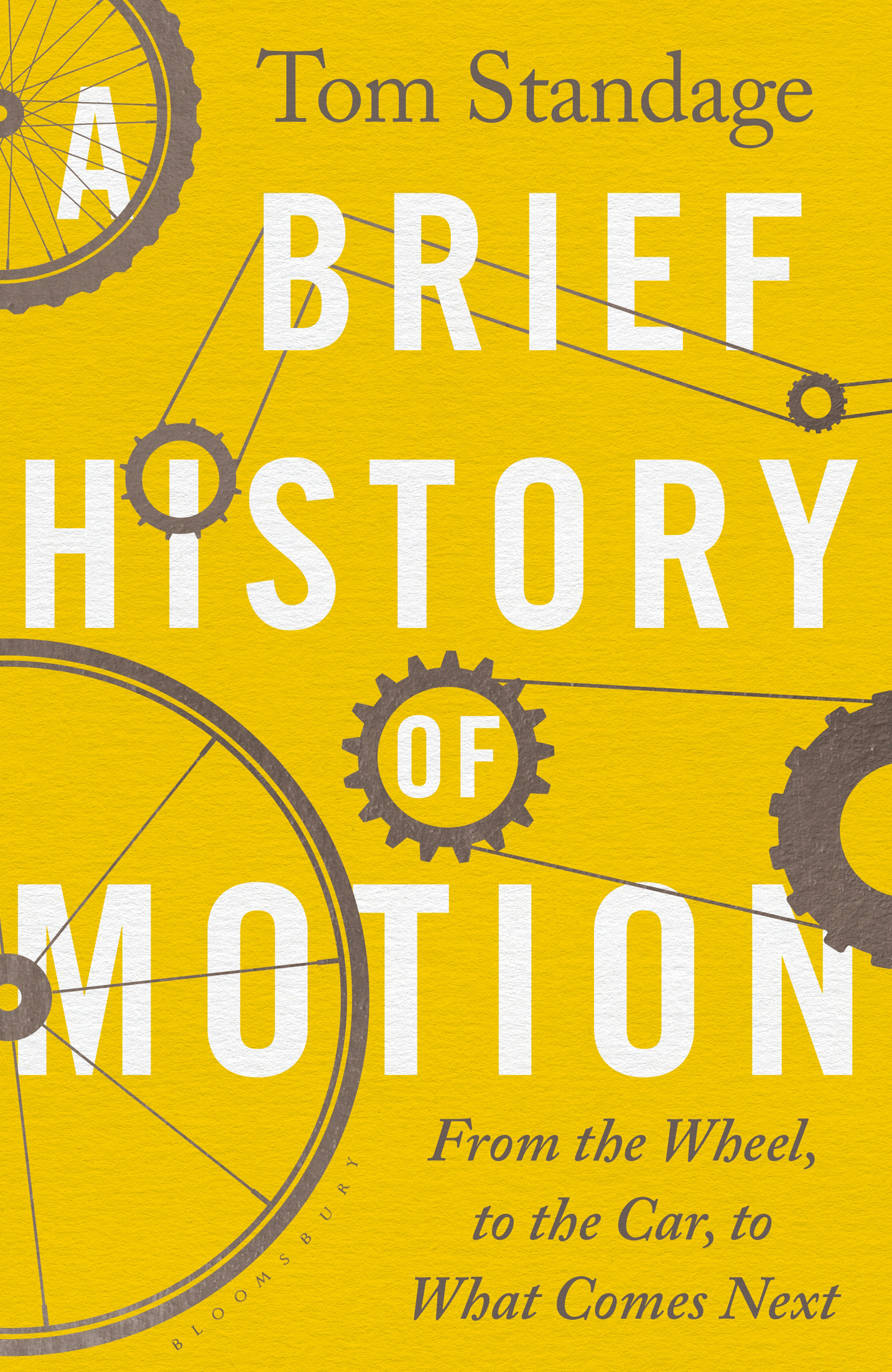

To Kirstin, my lifelong co-driver, with thanks for all the adventures
BY THE SAME AUTHOR
The Victorian Internet: The Remarkable Story of the Telegraph and the Nineteenth Centurys On-line Pioneers
The Neptune File: A Story of Astronomical Rivalry and the Pioneers of Planet Hunting
The Turk: The Life and Times of the Famous Eighteenth-Century Chess-Playing Machine
A History of the World in 6 Glasses
An Edible History of Humanity
Writing on the Wall: Social MediaThe First 2,000 Years

CONTENTS
Many of our technology-related problems arise because of the unforeseen consequences when apparently benign technologies are employed on a massive scale.
MELVIN KRANZBERG, AMERICAN HISTORIAN (191795)
The story of the dawn of the automotive era traditionally goes something like this.
In the 1890s the biggest cities of the Western world faced a mounting problem. Horse-drawn vehicles had been in use for thousands of years, and it was hard to imagine life without them. But as the number of such vehicles increased during the nineteenth century, the drawbacks of using horses in densely populated cities were becoming ever more apparent. In particular, the accumulation of horse manure on the streets, and the associated stench, were impossible to miss. By the 1890s around 300,000 horses were working on the streets of London, and more than 150,000 in New York City. Each of these horses produced an average of twenty-two pounds (ten kilograms) of manure a day, plus a quart (about a liter) of urine. Collecting and removing thousands of tons of waste from stables and streets proved increasingly difficult.
The problem had literally been building up for decades. A newspaper editor in New York City declared in 1857 that with the exception of a very few thoroughfares, all the streets are one mass of reeking, disgusting filth, which in some places is piled to such a height as to render them almost impassable to vehicles. Residents of other American cities voiced similar complaints, describing the streets as too foul to serve as the sties for the hogs, filthy in the extreme, and extremely unhealthy. As well as filling the air with a terrible stench, the abundance of horse manure turned streets into muddy cesspools whenever it rained. An eyewitness account from London in the 1890s describes the mud (the accepted euphemism among prudish Victorians) that often flooded the Strand, one of the citys main thoroughfares, as having the consistency of thick pea soup. Passing vehicles would fling sheets of such soupwhere not intercepted by trousers or skirtscompletely across the pavement, spattering and staining nearby houses and shop fronts.
Crossing sweepers would help the well-to-do across the road in larger cities, ensuring for a small fee that the path was clear of fresh horse droppings. But any street that was not constantly cleared, noted an American writer in 1899, is literally carpeted with a warm, brown matting of comminuted horse-dropping, smelling to heaven and destined in no inconsiderable part to be scattered in fine dust in all directions, as it was ground down by iron-shod wheels and hooves. Manure collected from the streets was piled up at dumps dotted around major towns and cities. Huge piles of manure also built up next to stables and provided an attractive environment for flies. Health officials in Rochester, New York, calculated that if the manure produced by the fifteen thousand horses in the city each year was piled up, it would cover an acre of ground to a height of 175 feet and breed 16 billion flies. And Rochester was a small city by comparison with Chicago, which had five times as many horses, or New York City, which had ten times as many.
All of this was bad for public health. The board of healths statisticians in New York City found higher levels of infectious disease in dwellings and schools within fifty feet of stables than in remoter locations, the New York Times reported in 1894. According to one turn-of-the-century calculation, twenty thousand New Yorkers died annually from maladies that fly in the dust, clear evidence of the dangers posed to health by reliance on horses. To make matters worse, horses were frequently overworked, and when they dropped dead, their bodies were often left rotting on the streets for several days before being dismembered and removed, posing a further health risk. By the 1880s, fifteen thousand dead horses were being removed from the streets of New York City each year.
Paradoxically, the advent of the steam locomotive and the construction of intercity railway links, starting in the 1830s, had helped make the problem worse. Faster and more efficient transport between cities increased the demand for rapid transport of people and goods within them, which required a greater number of horse-drawn vehicles. Our dependence on the horse has grown almost pari passu [step for step] with our dependence on steam, noted one observer in 1872. The result was more horses, more manureand steadily worsening congestion. One observer in 1870 wrote that Broadway in Manhattan was almost impassable at some times of the day. By 1890, streets in the lower part of the city are completely blocked three or four days out of the week, observed Scientific American . And when the traffic did move, it was deafening, as metal horseshoes and iron-rimmed wheels clattered over uneven surfaces. In the 1890s conversation was barely possible on New York City streets because of the sound of traffic. Straw was sometimes strewn on roads outside hospitals, and some private houses, to reduce the din.
Pollution, congestion, and noise were merely the most obvious manifestations of a deeper dependency. An outbreak of equine influenza in North America in October 1872 incapacitated all horses and mules for several weeks, providing a stark reminder of societys reliance on animal power. The New York Times noted the disappearance of trucks, drays, express-wagons and general vehicles from the streets. The present epidemic has brought us face to face with the startling fact that the sudden loss of horse labor would totally disorganize our industry and commerce, noted the Nation . Horses and stables, the newspaper observed, are wheels in our great social machine, the stoppage of which means injury to all classes and conditions of persons, injury to commerce, to agriculture, to trade, to social life.
Yet societies on both sides of the Atlantic continued to become steadily more dependent on horses. Between 1870 and 1900, the number of horses in American cities grew fourfold, while the human population merely doubled. By the turn of the century there was one horse for every ten people in Britain, and one for every four in the United States. Providing hay and oats for horses required vast areas of farmland, reducing the space available to grow food for people. Feeding Americas 20 million horses required one third of its total crop area, while Britains 3.5 million horses had long been reliant on imported fodder.
Horses had become both indispensable and unsustainable. To advocates of a newly emerging technology, the solution seemed obvious: get rid of horses and replace them with self-propelling motor vehicles, known at the time as horseless carriages. Today we call them cars.
Font size:
Interval:
Bookmark:
Similar books «A Brief History of Motion»
Look at similar books to A Brief History of Motion. We have selected literature similar in name and meaning in the hope of providing readers with more options to find new, interesting, not yet read works.
Discussion, reviews of the book A Brief History of Motion and just readers' own opinions. Leave your comments, write what you think about the work, its meaning or the main characters. Specify what exactly you liked and what you didn't like, and why you think so.


